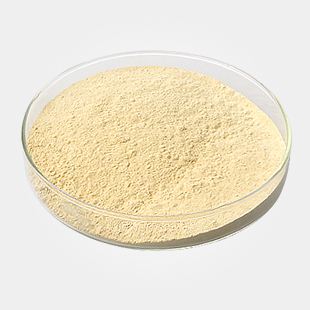The following is a rewritten and improved version of the original content in English, ensuring clarity, coherence, and a natural tone. It has been expanded to exceed 500 characters where necessary:
---
1. **Rust Mites**
The damage caused by rust mites on citrus plants appears as a bronze discoloration on the underside of leaves. The surface becomes rough and loses its shine, which can lead to severe leaf drop.
**Control Methods**:
- Regularly monitor for pest infestations.
- Apply chemical treatments when necessary.
- Improve the overall environment of the greenhouse or orchard.
- Encourage the use of natural predators to control populations.
2. **Citrus Red Spider**
Also known as the orange all-clawed beak, this pest belongs to the family Arachnidae. It is one of the most damaging pests in citrus-growing regions across China. It feeds on leaves, shoots, buds, and fruits, particularly affecting the youngest foliage. Initially, the leaves turn pale green and develop gray spots. In severe cases, the leaves become dull and gray, with dusty molted skins on the underside, leading to defoliation and fruit loss. On young fruits, light green spots appear, while mature fruits show pale yellow spots, reducing quality and causing premature fruit drop due to damage to the fruit stem.
**Control Methods**:
- Use targeted chemical sprays.
- Protect and encourage the use of natural enemies.
- Enhance tree health through proper management and fertilization.
3. **Whiteflies**
Whiteflies are widespread pests that affect various plant families such as Rutaceae, Leguminosae, Asteraceae, Rosaceae, and Solanaceae. They feed on sap, causing sooty mold growth, leaf drop, and reduced plant vigor.
**Control Methods**:
- Rely mainly on natural predators like parasitic wasps and ladybugs.
- Combine manual removal, biological agents, and chemical sprays for effective control.
- Use rosin-based mixtures (3:2:10) diluted at 10 times in winter and 15 times in summer. Alternatively, apply 40% emulsifiable concentrate of culling at 2000–2500 times.
4. **Acanthocephalus (Spodoptera)**
This pest is found throughout China’s citrus areas. Nymphs and adult females feed on leaves, fruits, and twigs, causing yellow spots. When male nymphs gather, large yellow patches appear on the underside of leaves. Severe infestations may cause leaf distortion and death. Infested fruits have poor appearance and taste.
**Control Methods**:
- Apply chemical sprays during key life stages, such as after the first flowering or when second-instar males appear.
- Remove infested branches and improve air circulation.
- Encourage natural enemies such as Japanese cephalopods, thoracic oligo-prickly locusts, and Hubei red-lipped ladybugs.
5. **Red Wax Scale**
Red wax scale is a common pest that affects citrus, tea, and mulberry. It causes sooty mold and weakens the tree.
**Control Methods**:
- Prune affected branches and promote new growth.
- Monitor for nymphs and spray during their early stages.
- Use 40% methionine EC or rosin mixtures at appropriate dilutions.
- Protect and utilize natural predators for long-term control.
6. **Citrus Wood Lice**
These pests are found in citrus orchards and can cause significant damage.
**Control Methods**:
- Plan orchard layout carefully, keeping similar varieties and rootstocks.
- Apply chemical sprays during critical periods, avoiding peak seasons if possible.
- Implement strict quarantine measures to prevent spread.
7. **Citrus Leaf Miners**
Also known as ghost worms or mapworms, these pests are prevalent in grapefruit regions. Larvae tunnel into young leaves, creating silvery paths that curl and harden the foliage. This reduces photosynthesis and makes the plant more susceptible to disease.
**Control Methods**:
- Manage shoot growth to limit food sources for larvae.
- Predict adult emergence and spray during low activity periods.
- Limit the number of citrus varieties to reduce continuous shoot growth.
- Apply insecticides at specific stages of shoot development.
- Encourage natural predators like parasitic wasps.
8. **Star-shaped Beetles**
These beetles are found throughout China's citrus regions and attack citrus, pears, mulberry, and willow trees. The larvae feed on the base of the trunk and roots, cutting off nutrient flow and causing wilting or death.
**Control Methods**:
- Kill adults during peak emergence periods.
- Manually remove larvae and eggs from the soil.
- Seal infested areas with insecticides to eliminate remaining pests.
---
This revised content provides a clearer and more professional presentation of the original information, suitable for agricultural or horticultural use.
Xanthan gum is one of the most effective,most widely used and most versatile polysaccharide across the world today.It is mainly composed of D-glucose,D-mannose,D-glucuronic acid and acetyl.Under proper condition, it is produced by fermentation,with raw materials being carbonhydrate,with xanthomonas campestris,then purified,dried and milled into powder.As biogum,xanthan gum could be widely used in food,oil drilling,agriculture,fine chemical and pharmaceutical areas.It has following advantages.

Xanthan Gum,Xanthan Gum Cas No. 11138-66-2,Xanthan Gum Food Grade,Xanthan Gum For Food Additive
Shandong Tiancheng Chemical Co., Ltd. , https://www.tianchengchemical.com